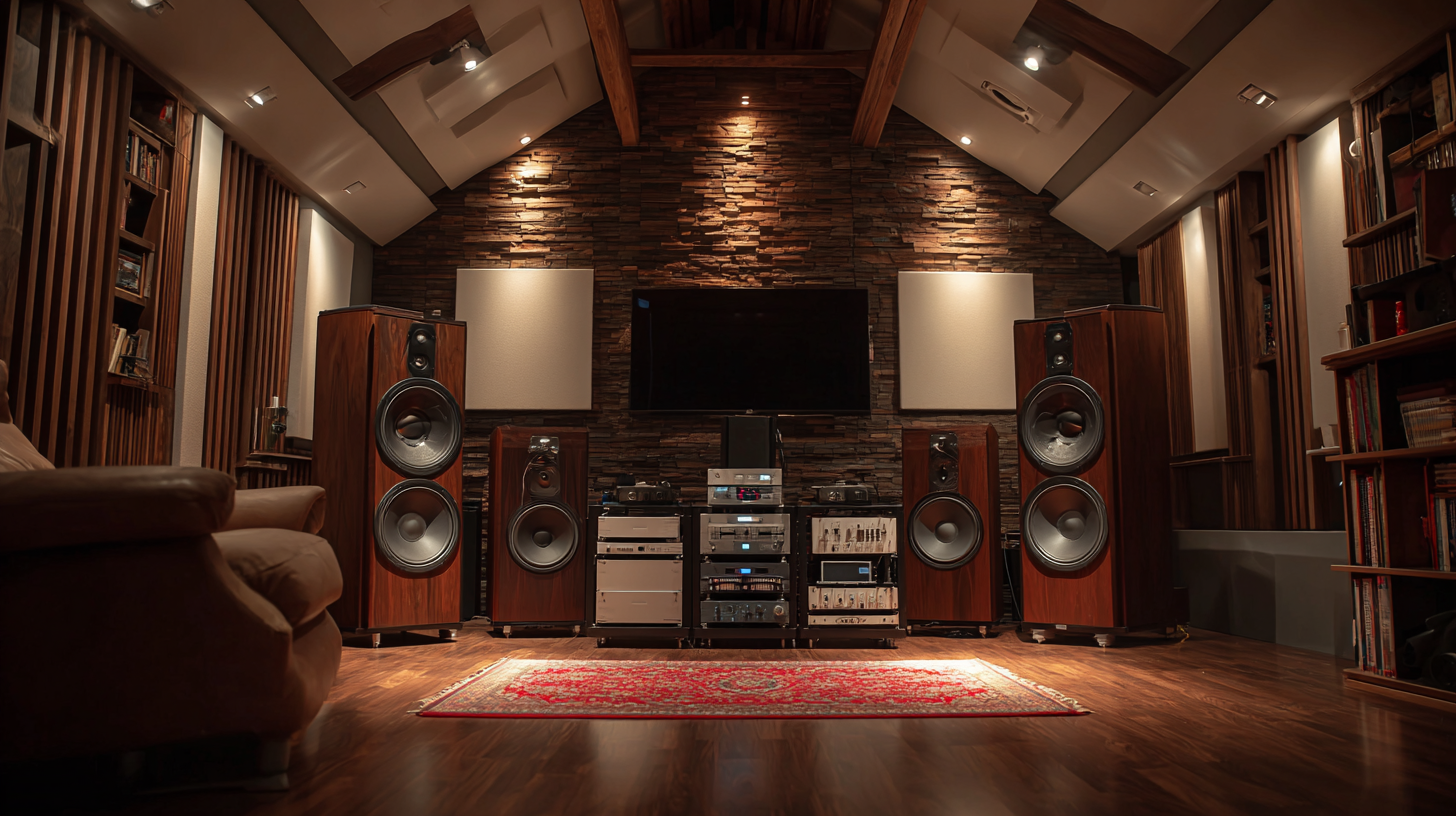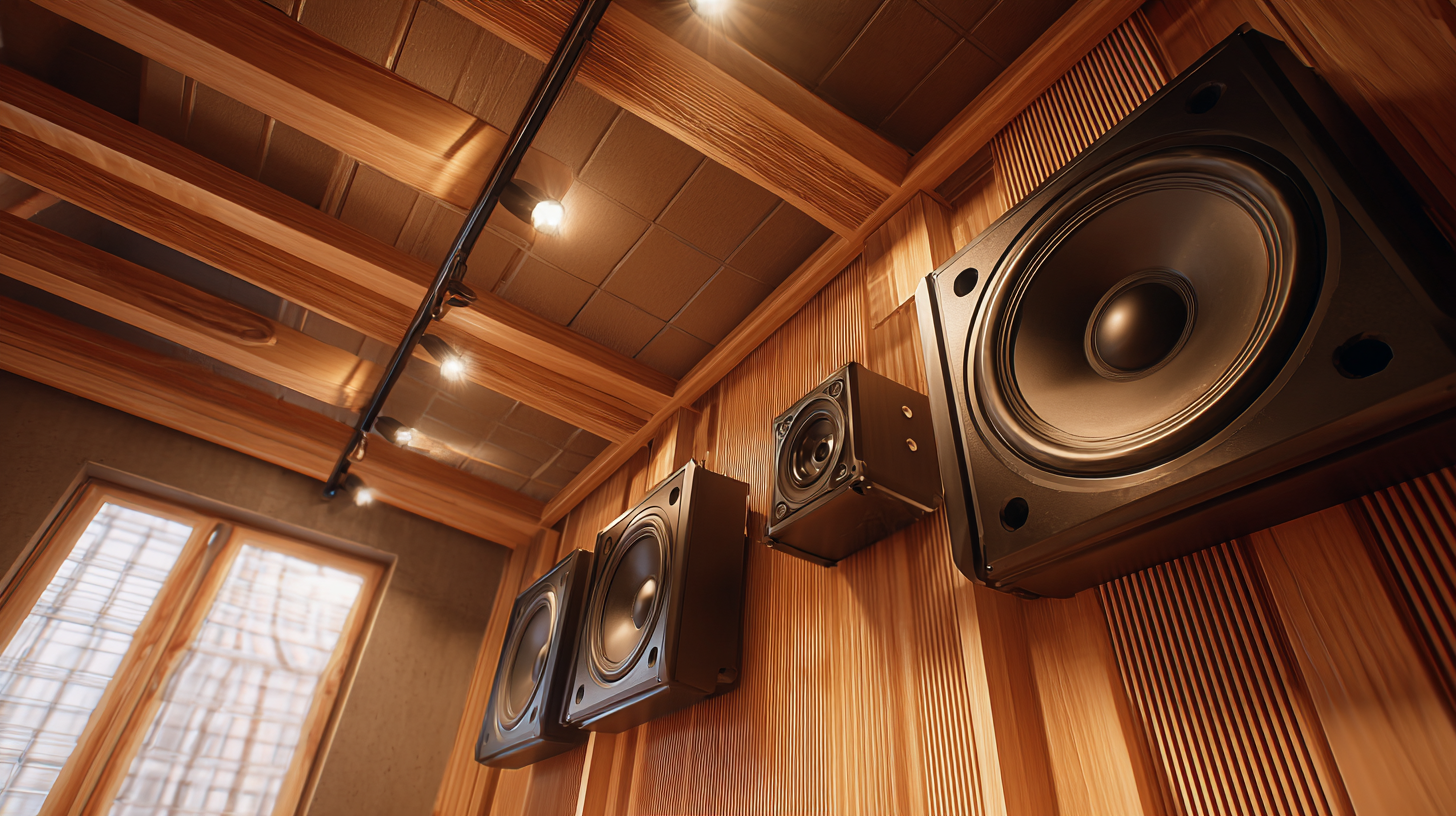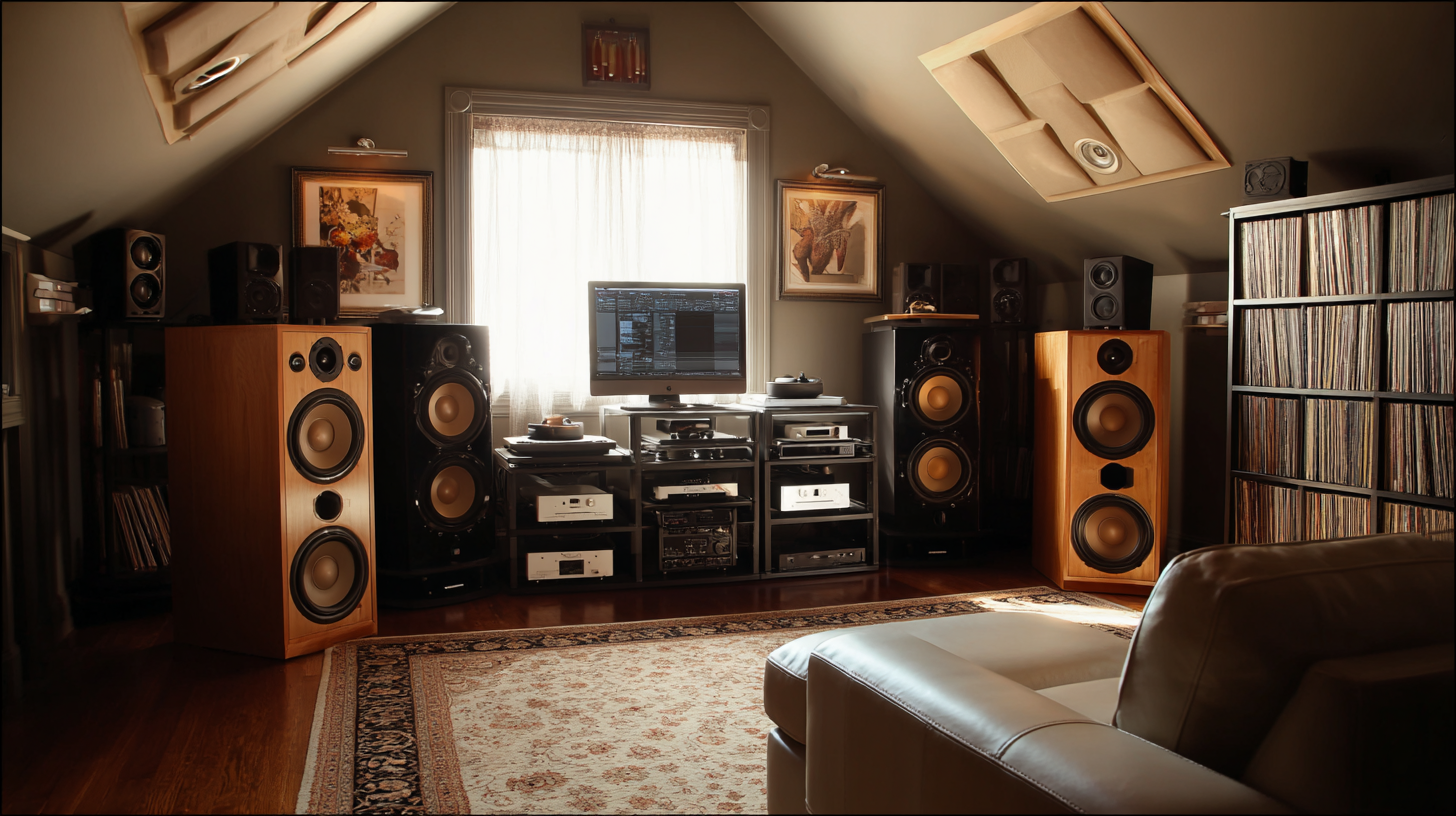In today's rapidly evolving audio landscape, choosing the right speaker ceiling for your home audio system is more crucial than ever. According to a report by Futuresource Consulting, the global market for ceiling speakers has experienced a remarkable growth rate of 15% annually, driven by the increasing demand for integrated audio solutions in residential spaces. Homeowners are now seeking seamless audio experiences that enhance their entertainment environments without compromising aesthetics. The right speaker ceiling not only delivers high-quality sound but also blends harmoniously with modern interior designs. With various options available on the market, understanding the essential factors to consider when selecting a speaker ceiling can significantly elevate your auditory experience, ensuring that you achieve the perfect balance between style and sound performance.

When selecting ceiling speakers for your home audio system, it’s essential to understand the different types available in the market. Generally, ceiling speakers can be categorized into two main types: passive and active. Passive ceiling speakers require an external amplifier for sound, making them suitable for users who are already familiar with audio systems and prefer a more customizable setup. On the other hand, active speakers come with built-in amplifiers, which makes installation a breeze. According to a recent industry report by Futuresource Consulting, passive speakers account for about 70% of the market for ceiling speakers, appealing to audiophiles who prioritize sound quality and flexibility.
When choosing your ceiling speakers, consider the size of your room and the type of audio experience you desire. For instance, larger rooms benefit from high-powered models, while smaller spaces can efficiently use lower wattage speakers without sacrificing sound quality. **Tip:** Always test speakers in a similar environment to your home before making a purchase to get a realistic expectation of sound quality.
Additionally, pay attention to the frequency response of the speakers. A wider frequency range generally indicates a richer sound experience, but remember that this might also come with a higher price tag. **Tip:** Look for ceiling speakers with a frequency response of at least 60 Hz to 20 kHz to ensure a balanced sound profile across various music genres.

When enhancing your home audio system, selecting the right ceiling speakers is crucial to achieving optimal sound quality. One of the key features to consider is the speaker size. Larger speakers generally produce richer sound, but ensure they fit seamlessly into your ceiling space and don’t overwhelm the room acoustics. Choosing speakers with the right wattage is also essential, as it determines how well they can fill your space without distortion.
Another important factor is the speaker's sensitivity ratings, which indicate how efficiently they convert power into volume. A higher sensitivity rating means your speakers can produce louder sound without needing as much power, which can be particularly beneficial in larger rooms. Additionally, look for speakers that come with rotatable tweeters. This feature allows you to direct sound towards your listening area, enhancing the overall audio experience and creating a more immersive environment.
Lastly, take into account your preferred audio system and compatibility. Ensure that the ceiling speakers you choose can integrate seamlessly with your existing setup, whether it’s for watching movies, listening to music, or gaming. Opting for speakers with versatile mounting options and aesthetic designs will not only improve acoustics but also complement your home decor.
Proper speaker placement is crucial for achieving optimal sound quality in your home audio system. When installing ceiling speakers, consider the listening area and the layout of your room. Ideally, speakers should be positioned to create an even sound field, allowing for a balanced audio experience that envelops the listener.
If the speakers are too close to walls or ceiling corners, sound waves can reflect unevenly, leading to muddied audio and diminished clarity.
In addition to spatial considerations, the height at which speakers are installed plays a significant role in sound distribution. Mounting speakers at ear level when seated can enhance audio clarity and create a more immersive experience. Furthermore, angling the speakers slightly toward the primary listening area can help direct sound where it’s needed most, rather than allowing it to dissipate into empty space.
By taking the time to carefully plan speaker placement, homeowners can transform their audio systems into dynamic environments that deliver superior sound quality and an enhanced listening experience.
When setting up a home audio system, a key decision lies in choosing between active and passive ceiling speakers. According to industry reports from the Consumer Technology Association, active speakers, which have built-in amplifiers, have seen a significant rise in popularity, with around 55% of consumers opting for them in recent home installations. This preference is largely due to their simplicity and ease of use; active speakers can be directly connected to audio sources without the need for external amplifiers, making them a great choice for those looking to minimize clutter and setup complexity.
On the other hand, passive ceiling speakers, which require an external amplifier, offer advantages in sound quality and customization. A study by the International Audio Engineering Society found that consumers who invested in a quality amplifier noted a 30% improvement in sound fidelity and overall listening experience. Additionally, passive speakers often provide more flexibility for systems that may require expansion or integration with other components over time. Therefore, while active speakers might be favored for their convenience, passive speakers can deliver superior sound performance, catering to audiophiles and those seeking a tailored auditory experience in their homes.
When considering an upgrade to your home audio system, ceiling speakers can provide an excellent balance of sound quality and aesthetic appeal. In fact, a recent industry report reveals that the global in-ceiling speaker market is projected to reach $1.5 billion by 2026, with a significant growth rate of 10.1% annually. This upward trend emphasizes the increasing popularity of ceiling speakers, particularly in home environments where clean design and unobtrusive sound are paramount.
When budgeting for a ceiling speaker setup, it's crucial to understand what you can expect to spend. Entry-level models can start around $100 per speaker, while high-end options can exceed $500 each, depending on sound quality, brand reputation, and additional features. According to audio experts, a well-rounded setup for a standard living room can range from $600 to $1,500, ensuring you achieve optimal sound without overspending. Investing in quality wiring and installation can also affect your overall budget, making it essential to plan accordingly for your ideal audio experience.






